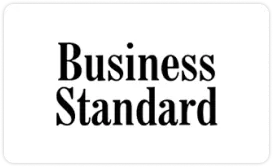
Canadian Experience Class Candidates Invited in First Express Entry Draw of October
On October 1, 2025, Immigration, Refugees and Citizenship Canada (IRCC) held the 370th Express Entry draw, exclusively inviting 1,000 candidates under the Canadian Experience Class (CEC) with a Comprehensive Ranking System (CRS) cutoff score of 534. This draw continues a recent stable pattern, reinforcing the CEC stream as a vital pathway for skilled workers already in Canada.
Table of Contents
- What is the Express Entry System?
- Spotlight on Canadian Experience Class (CEC)
- Details of the October 1, 2025 Draw
- Why the October Draw Matters
- What Factors Influence CRS Scores
- Strategies to Improve Your Chances
- What to Do If You Missed This Draw
- Risks and Uncertainties to Watch
- What to Expect Next in October 2025
- Conclusion
- FAQs
What is the Express Entry System?
Canada’s Express Entry is an electronic system used by IRCC to manage applications for permanent residence under its main economic immigration programs.
Key Streams Under Express Entry
Three main programs fall under the Express Entry umbrella:
- Federal Skilled Worker (FSW): For skilled workers with no prior Canadian experience.
- Federal Skilled Trades (FST): For workers in specific trade occupations.
- Canadian Experience Class (CEC): For people who already have skilled work experience in Canada.
How Express Entry Draws Work
Candidates create a profile in the Express Entry pool, and the system computes a CRS score. Periodically, IRCC holds draws, inviting top-scoring profiles to apply for permanent residence (ITAs). Draws can be general or program-specific.
Spotlight on Canadian Experience Class (CEC)
Eligibility Criteria for CEC
To qualify for CEC, a candidate must have at least one year of skilled work experience in Canada within the last three years, meet minimum language requirements, and hold legal status while working.
Why CEC is Favored by IRCC
Work experience in Canada gives candidates familiarity with the Canadian labour market, making their integration smoother. It helps Canada retain talent that is already contributing to its economy.
Details of the October 1, 2025 Draw
Number of Invitations to Apply (ITAs)
1,000 ITAs were issued in this draw. This mirrors the prior two CEC draws in 2025, which also issued 1,000 invitations each.
CRS Cut-off and Tie-Breaking Rule
The CRS cutoff was 534. The tie-breaking rule was set for February 21, 2025, at 04:01:57 UTC, meaning only candidates with a score of 534 who submitted their profile before this time were invited.
Comparison with Recent CEC Draws
Both the September and August 2025 CEC draws also invited 1,000 candidates with a cutoff of 534, continuing a stable pattern.
Why the October Draw Matters
Trend of Program-Specific Draws
Canada has increasingly used program-specific draws to target immigration goals. For 2025, IRCC has conducted 10 CEC draws so far.
Significance for CEC Candidates
If you are in Canada with skilled experience, these draws are your most direct route to PR. A stable cutoff of 534 helps you gauge where you stand.
Impacts on Other Categories
With draws reserved for CEC, fewer invitations remain for general or PNP draws, increasing competition outside the CEC stream.
What Factors Influence CRS Scores
Key factors include age, education, skilled work experience (both in Canada and abroad), and strong performance on English (IELTS, CELPIP) or French (TEF, TCF) tests. Additional boosts come from a Provincial Nominee Program (PNP) nomination (+600 points), a spouse with strong credentials, or French proficiency.
Strategies to Improve Your Chances
- Strengthen Language Test Results: Retake tests for better scores.
- Gain More Canadian Work Experience: Extend your work permit or switch to a qualifying job.
- Secure a Provincial Nomination: Research PNP streams that align with your profile.
- Submit Your Profile Early: Tie-breaker rules favor earlier submissions.
What to Do If You Missed This Draw
Not getting invited doesn’t mean the end. Your profile remains valid in the pool. Continue to monitor new draws (French, PNP, trades, healthcare) and update your profile immediately if your credentials improve.
Risks and Uncertainties to Watch
Be aware that the CRS cutoff can be volatile, IRCC can change its policies, and processing backlogs can cause delays. Submitting accurate documents is key to reducing risk.
What to Expect Next in October 2025
Following a CEC draw, IRCC often runs a French language-based draw or another category-specific draw. A PNP or general draw could also appear later in the month. The CRS cutoff may shift depending on the competitiveness of new applicants entering the pool.
Conclusion
The October 1, 2025 draw confirms IRCC’s continued emphasis on CEC candidates. For those with Canadian experience, this remains one of the strongest pathways to permanent residence. For others, a flexible strategy focusing on PNP, category draws, and upgrading credentials is essential for success.
FAQs
You would have missed the cutoff. Your profile remains active for future draws, and you should focus on improving your score.
In 2025, IRCC has conducted 10 CEC draws so far, showing it's a frequently used program-specific approach.
No. CEC is reserved for individuals who already have at least one year of skilled work experience in Canada.
Yes, strong French skills can boost your CRS score. It can also make you eligible for French-language category draws, which often have lower CRS cutoffs.
Typically within a week or two. IRCC might hold a French-language, category-based, or PNP draw next.











